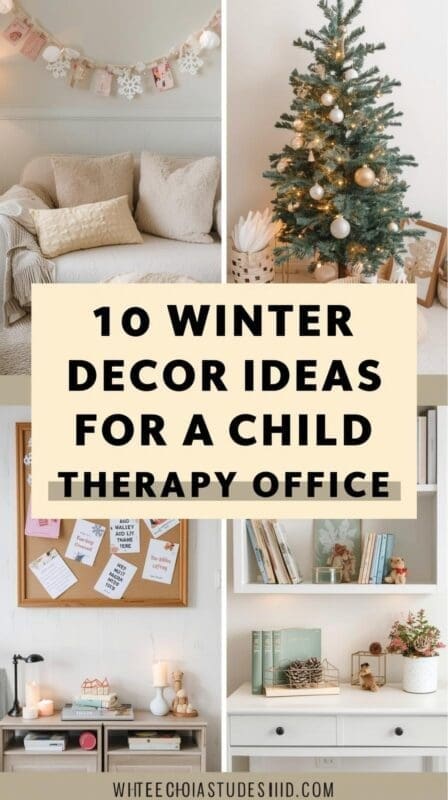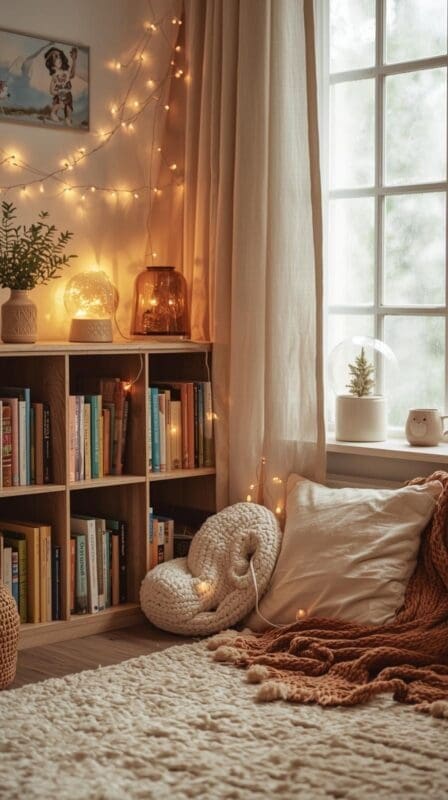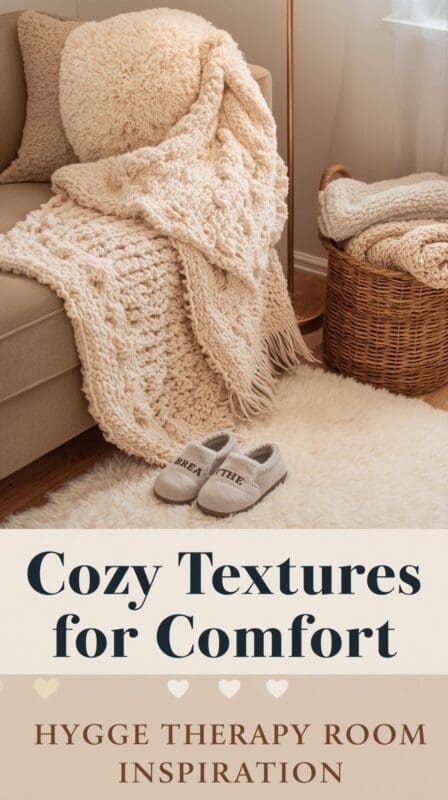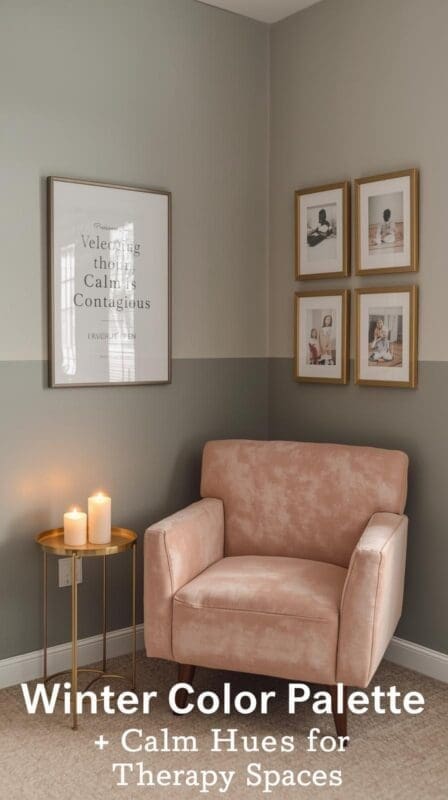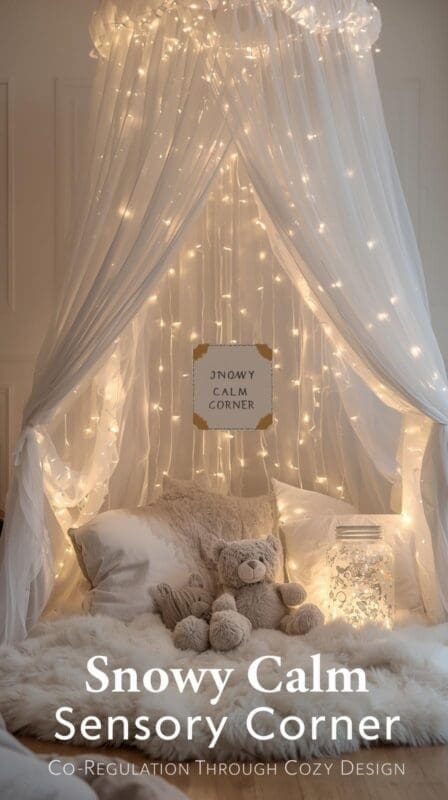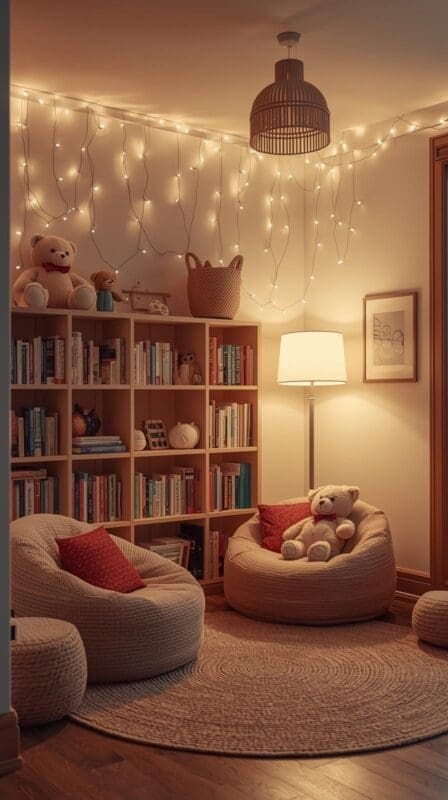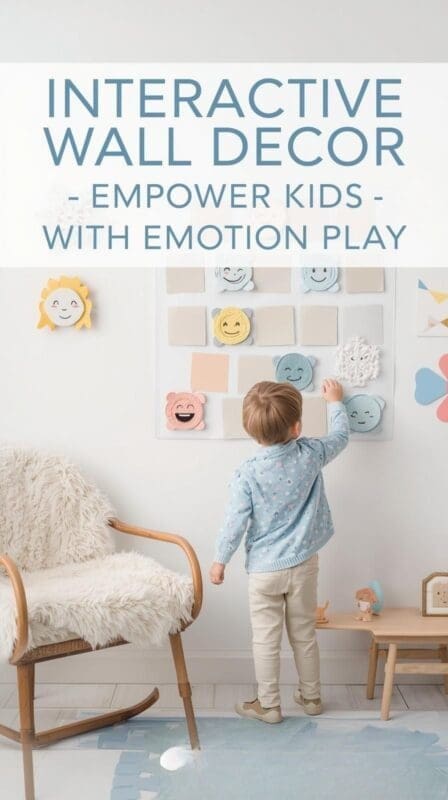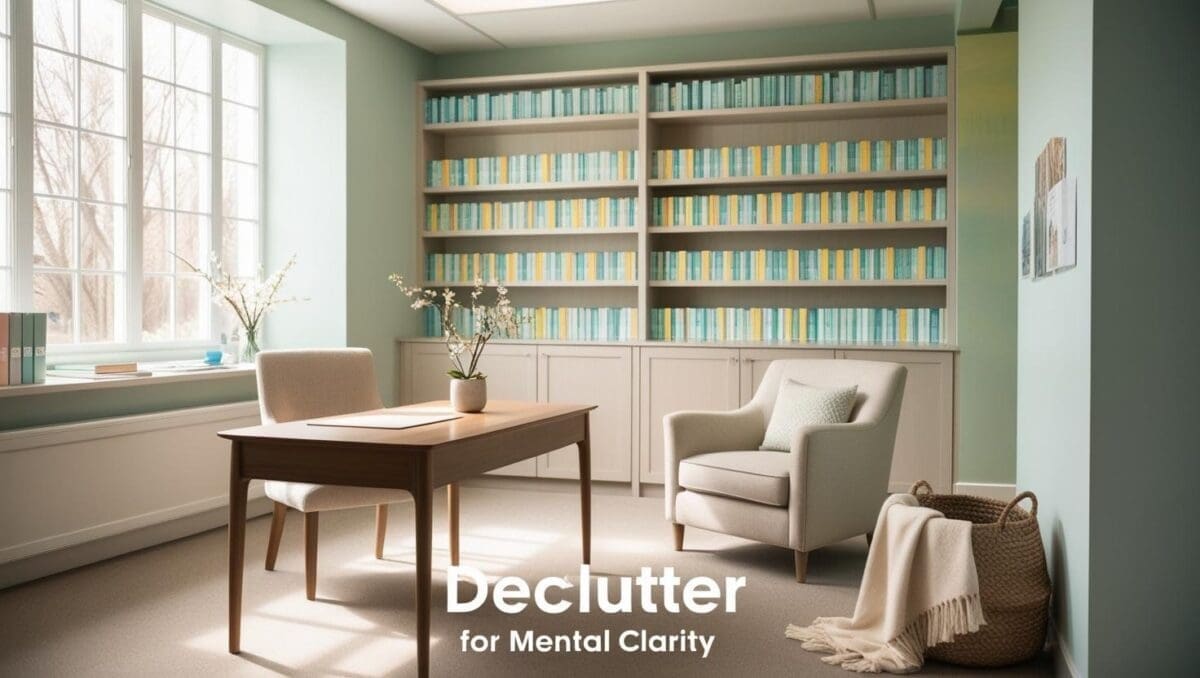Winter Therapy Office Decor Ideas for Child Counselors: Cozy, Calming, and Therapeutic
On a gray December morning, I switched on the tiny snow-globe lamp in my therapy room—and watched a child’s shoulders drop. That’s when I remembered: safety can glow.
Winter can easily turn a therapy office cold and colorless, especially for children who thrive on warmth, rhythm, and sensory engagement. But with a few intentional touches—soft light, playful textures, and co-created décor—your space can become more than a room. It becomes a regulation tool, a cue of safety, and a quiet way of saying, you belong here.
A cozy therapy office isn’t about style; it’s about co-regulation made visible.
When your space feels calm, your young clients’ nervous systems pick up on that safety. Through soft lighting, grounding textures, and interactive elements, you invite their bodies to relax before a single word of therapy begins.
In this guide, you’ll find 10 winter therapy office décor ideas designed through the lens of a child counselor and occupational therapy principles—blending warmth, creativity, and sensory-smart design.
It’s important to disclose that this blog post contains affiliate links. This means that if you make a purchase through these links, we may earn a commission at no additional cost to you.
The Science of Cozy: Why Environment Shapes Emotion
Before we dive into décor, let’s talk about why it matters.
Research from polyvagal theory tells us that the nervous system constantly scans for cues of safety or threat. Warm lighting, consistent colors, and soft materials activate the social engagement system, signaling to a child’s body: You’re safe. You can connect.
From an occupational therapy perspective, the sensory environment directly impacts self-regulation. Soft textures, gentle sound, and neutral scents help integrate sensory input, reducing anxiety and overstimulation. A cluttered, echoing room can overwhelm sensitive children, while cozy, layered cues restore focus and calm.
As a counselor, I’ve seen this transformation countless times. A child walks in restless and fidgeting, but once they curl up on a textured rug under soft light, their breathing slows. The goal isn’t Pinterest perfection—it’s physiological safety.
Your décor doesn’t just look inviting—it helps children’s nervous systems settle into the work of healing.
1. Soft Winter Lighting
Why it helps:
Dim, warm light cues the nervous system to downshift from alertness to calm. It reduces glare and creates a visual anchor during sessions.
Materials:
- Battery-powered fairy lights or LED candles
- Cordless, rechargeable lamp like this one (warm tone, adjustable)
- Snow-globe or night-light projector for visual focus
How to implement:
Layer two to three light sources instead of overhead fluorescents. Place one small lamp near the reading nook and another on your desk. Let kids switch them on at the start of sessions—it gives them agency.
Therapist Tip:
Keep a dimmable lamp remote so children can choose “sunlight,” “twilight,” or “night snow” brightness as a metaphor for mood.
Safety Note:
Avoid flickering bulbs for children with sensory sensitivities. Use rechargeable or shatter-safe lights.
2. Cozy Textures for Comfort
Why it helps:
Soft textures provide deep pressure and tactile grounding, helping children feel safe and present.
Materials:
- Plush rugs, chunky knit blankets, or washable faux-fur throws
- Weighted lap pads or bean bags
- Textured pillows (corduroy, sherpa, velvet)
How to implement:
Designate a “cozy corner.” Layer a rug, a weighted lap pillow (like this washable cover one), and a few pillows for sensory grounding. Encourage kids to choose their “comfort texture” before beginning work.
Therapist Tip:
Integrate textures into grounding exercises: “Which fabric feels calmest today?”
Safety Note:
Ensure weighted items are under 10% of a child’s body weight. Choose washable, hypoallergenic fabrics.
3. Calming Winter Color Palette
Why it helps:
Color impacts emotional tone. Muted blues, sage greens, and warm neutrals help regulate mood, while small touches of metallics (gold, copper) promote hope and lightness.
Materials:
- Removable wall decals (snowflakes, stars)
- Neutral or blue-toned pillow covers
- Warm metallic frames or vases
How to implement:
Create balance: cool hues for focus, warm accents for coziness. Let children help select one accent color to personalize the space (“Do we want icy blue or soft green snowflakes this week?”).
Therapist Tip:
Display art made by kids in matching frames—it boosts ownership and continuity.
Safety Note:
Use non-adhesive hooks and decals for rented or shared spaces.
4. “Snowy Calm” Sensory Corner
Why it helps:
Sensory zones support self-regulation. The combination of proprioceptive (weighted) and visual (light) cues grounds overstimulated children.
Materials:
- Canopy tent or small teepee
- Fluffy white rug or bean bag
- Weighted plush toys, sensory bottles, calm-down cards
How to implement:
Transform a corner with a sheer canopy, gentle light string, and a sensory basket. Add winter-themed fidgets like snow-textured putty or “frozen” glitter jars.
Therapist Tip:
Offer “snow breaks”: 2 minutes in the sensory corner to reset before returning to talk therapy.
Safety Note:
Avoid glass jars or heavy weights. Use soft-sided bins for easy cleanup.
5. Mindfulness Tree or Gratitude Wall
Why it helps:
Visual gratitude practices build emotional awareness, routine, and memory consolidation.
Materials:
- Poster board or wall decal tree
- Paper snowflakes, stars, or hearts
- String lights or mini clips
How to implement:
Create a Mindfulness Tree where each child adds a snowflake labeled with something they’re grateful for or proud of. Switch the theme monthly (“kindness flakes,” “hope stars”).
Therapist Tip:
Turn adding to the tree into your session closing ritual—“Let’s hang our thought for the week.”
Safety Note:
Secure hanging elements well; use paper instead of glass ornaments.
6. Winter Nature Elements
Why it helps:
Nature cues activate the parasympathetic nervous system—grounding children through texture, scent, and visual rhythm.
Materials:
- Pinecones, dried orange slices, small branches
- Wooden trays, faux snow, or smooth pebbles
- Vanilla or pine-scented sachets (optional, low-intensity)
How to implement:
Use a nature tray as a mindfulness tool. Let kids rearrange natural materials while reflecting: “What do these pinecones remind you of?”
Therapist Tip:
Rotate elements weekly to keep novelty high and prevent overstimulation.
Safety Note:
Avoid strong scents and real pine sap for allergy safety.
7. Reading Nook for Restorative Breaks
Why it helps:
A calm reading nook encourages self-regulation, rest, and quiet processing after emotional moments.
Materials:
- Soft bean bag or child-sized armchair
- Bookshelf or crate of mindful stories
- Warm lamp or fairy light canopy
How to implement:
Create an invitation to pause. Stock your shelf with therapist-approved books like The Invisible String and A Feel Better Book for Little Tempers.
Therapist Tip:
Invite children to “read to the room” when verbalizing feelings feels too hard.
Safety Note:
Use cordless lighting and stable furniture with rounded corners.
8. Interactive Wall Décor
Why it helps:
Movement and tactile input strengthen emotional literacy. Children externalize feelings safely through play.
Materials:
- Felt board or Velcro emotion faces
- Magnetic affirmation board with word magnets
- Winter-themed scene with movable figures
How to implement:
Offer open-ended choice: “Which feeling face fits your morning?” or “Where should the snow bear go today?”
Therapist Tip:
Integrate emotional labeling into art time—combine movement with conversation.
Safety Note:
Ensure all magnets or small parts are secured for under-6 clients.
- Funky Mood Decals Set: the package includes 40 pieces of feeling refrigerator magnets, coming with a range of funky mood…
- Ideal Size for Kids: our funny feeling refrigerator magnets are easy to handle with a 2.28 inch/ 5.8 cm diameter; Their …
- Durable and Safe Material: these funny emotional magnets for fridge are made with quality magnetized 250g coated paper t…
9. DIY Winter Art Display
Why it helps:
Displaying children’s artwork validates identity and growth, reinforcing belonging.
Materials:
- String and mini clothespins, or clipboard wall
- Neutral frame set or corkboard
- Labels or small tags
How to implement:
Create a rotating “Winter Gallery Wall.” Invite kids to title their pieces (“This one is my calm snowstorm”).
Therapist Tip:
Use artwork to track emotional themes across sessions—it’s visual progress data.
Safety Note:
Avoid glass frames; use clipboards or laminated prints.
10. Subtle Seasonal Scents
Why it helps:
Gentle scents activate olfactory pathways tied to memory and relaxation.
Materials:
- Diffuser with chamomile, vanilla, or cinnamon
- Unscented soy candle for visual comfort
- Scent-free day sign for sensitivity rotation
How to implement:
Run diffuser only before or after sessions to lightly scent the air. Label oils clearly.
Therapist Tip:
Invite older clients to create their own “therapy blend” association—used only in safe spaces.
Safety Note:
Avoid peppermint or pine for sensory-sensitive clients; maintain at least one scent-free day per week.
Bonus Idea: Therapeutic “Snow Day” Box
Create a small box of sensory and creative tools to bring out when energy runs high.
Include: Snowflake playdough, winter mandala coloring sheets, small puzzles, and glitter calm jars.
It’s the perfect blend of play and emotional regulation during gray winter afternoons.
❄️ How Winter Decor Inspires Counselor Creativity
For many clinicians, winter can feel emotionally draining—short days, heavy caseloads, and less natural light. Refreshing your office visually is a gentle form of therapist self-care.
Benefits for the practitioner
- Sensory renewal: Engaging with light, texture, and scent stimulates your own parasympathetic calm.
- Creative confidence: Designing environments is playful artistry—it reminds you that therapy itself is creative work.
- Professional joy: A beautiful, meaningful space reignites enthusiasm and models vitality for clients.
Try this:
- Choose one “signature winter touch” that reflects you—a soft amber lamp, a framed quote about warmth, or a handmade garland.
- Keep a rotating seasonal shelf where you display small symbols of renewal or hope created by clients. It grounds you in purpose and growth.
- At the end of the day, turn on soft lights and take one slow minute to notice the beauty you’ve created. That moment is your own grounding ritual.
Creating a Trauma-Sensitive Winter Space
A trauma-informed therapy room soothes without surprising. That means predictability over perfection.
- Lighting: Avoid blinking or color-changing lights. Stick with steady warmth.
- Sound: Keep background noise low and consistent; use soft instrumental music if at all.
- Layout: Maintain clear pathways; children with trauma feel safer when they can see the exit.
- Textures: Soft, washable, and familiar (cotton, fleece).
- Inclusion: Choose winter imagery—snowflakes, stars, trees—rather than holiday-specific symbols.
- Scent: Offer a neutral baseline; avoid strong fragrances.
When a child knows what sensory experience to expect, they can focus their energy on connection, not defense.
Small Rituals, Big Connection
Rituals turn décor into relationship tools. A few seconds of predictability builds trust.
- Light Switch-On: Begin each session by letting the child flip on the fairy lights—an embodied cue of safety.
- Snowflake Sharing: Each week, hang one paper snowflake with a reflection (“One thing that felt brave this week”).
- Mindfulness Tree Feed: End sessions by “feeding the tree”—adding gratitude or hope notes.
These small rituals mirror regulation patterns: transition → engagement → closure. Over time, they become the nervous system’s favorite part of therapy.
Therapist Décor Planner: Budget & Sensory Impact
| Element | Cost | Setup Time | Sensory Focus | Tip |
|---|---|---|---|---|
| Fairy lights | €10–15 | 5 min | Visual warmth | Use rechargeable string lights |
| Weighted pillow | €20–25 | 10 min | Proprioceptive input | Keep extra cover for washing |
| Rug / bean bag | €30–40 | 10 min | Grounding | Choose washable, soft texture |
| Calm jar | < €10 | 10 min | Visual regulation | Great co-regulation craft |
| Wall decals | €8–12 | 5 min | Visual engagement | Let kids help apply |
| Diffuser (optional) | €15–25 | 5 min | Olfactory cue | Label oils + scent-free day |
FAQs
Is it ethical to decorate therapy rooms for children?
Yes—within boundaries. Keep décor neutral, child-friendly, and non-religious. Avoid anything that reveals personal beliefs or creates dual relationships.
How do I keep décor non-distracting for neurodivergent clients?
Use minimal patterns, steady lighting, and soft textures. Avoid flickering lights or overly scented items.
What if I share an office?
Create portable décor—foldable rugs, cordless lamps, clip-on wall art—that you can set up in 10 minutes.
How can I make décor seasonal without overspending?
Focus on reusable neutrals: fairy lights, white fabrics, and nature-based accents. Swap paper décor or art prints only.
Are candles or diffusers safe in child spaces?
Use battery-operated candles or scent sachets. If diffusing, stick to mild, well-researched essential oils in low concentration.
How do I store or rotate items efficiently?
Label bins by season, store soft items in vacuum bags, and keep one “neutral base” (rug, lighting) all year for consistency.
Reflective Conclusion
By winter’s middle, the outside world may feel gray—but inside your therapy office, warmth can bloom in small, intentional ways.
A cozy rug becomes a grounding tool. A snowflake on the wall becomes a child’s first act of belonging. A softly glowing lamp becomes a cue for safety.
As counselors, we shape spaces that heal. Every light, pillow, and craft is part of a child’s nervous system story. When my lamp glows softly at dusk and a child whispers, “It feels warm in here,” I know the space itself is part of the therapeutic team.
Let this winter be your invitation to create a room that doesn’t just look calm—it feels calm.

About the Author
Hi, I’m Eve, a former school counselor with a master’s degree in School Psychology and a passionate advocate for children and families navigating sensory challenges. As a mom of children with sensory sensitivities, I deeply understand the journey special-needs parents face, and I dedicate myself to researching and sharing practical solutions to help children thrive and feel comfortable in their bodies. My goal is also to empower counselors, therapists, and psychologists with creative strategies and supportive resources to enrich their everyday practice. When I’m not writing or exploring new therapeutic approaches, you’ll find me spending quality time with my family and continually seeking inspiration from everyday moments.

